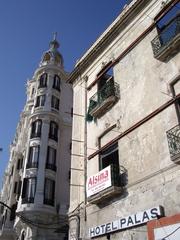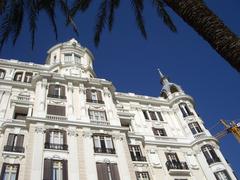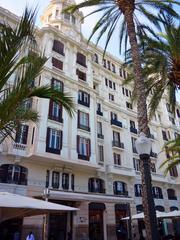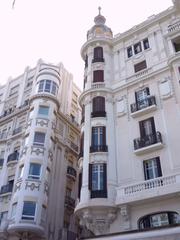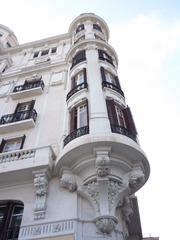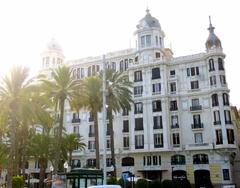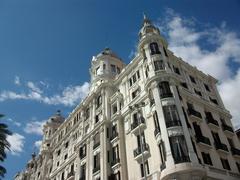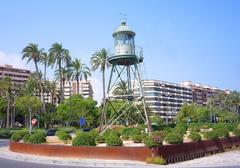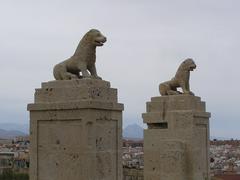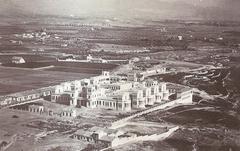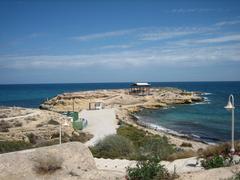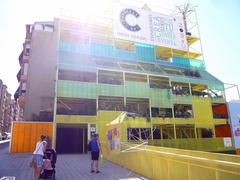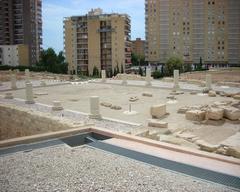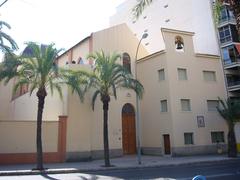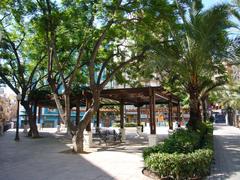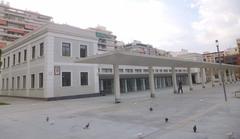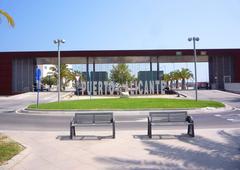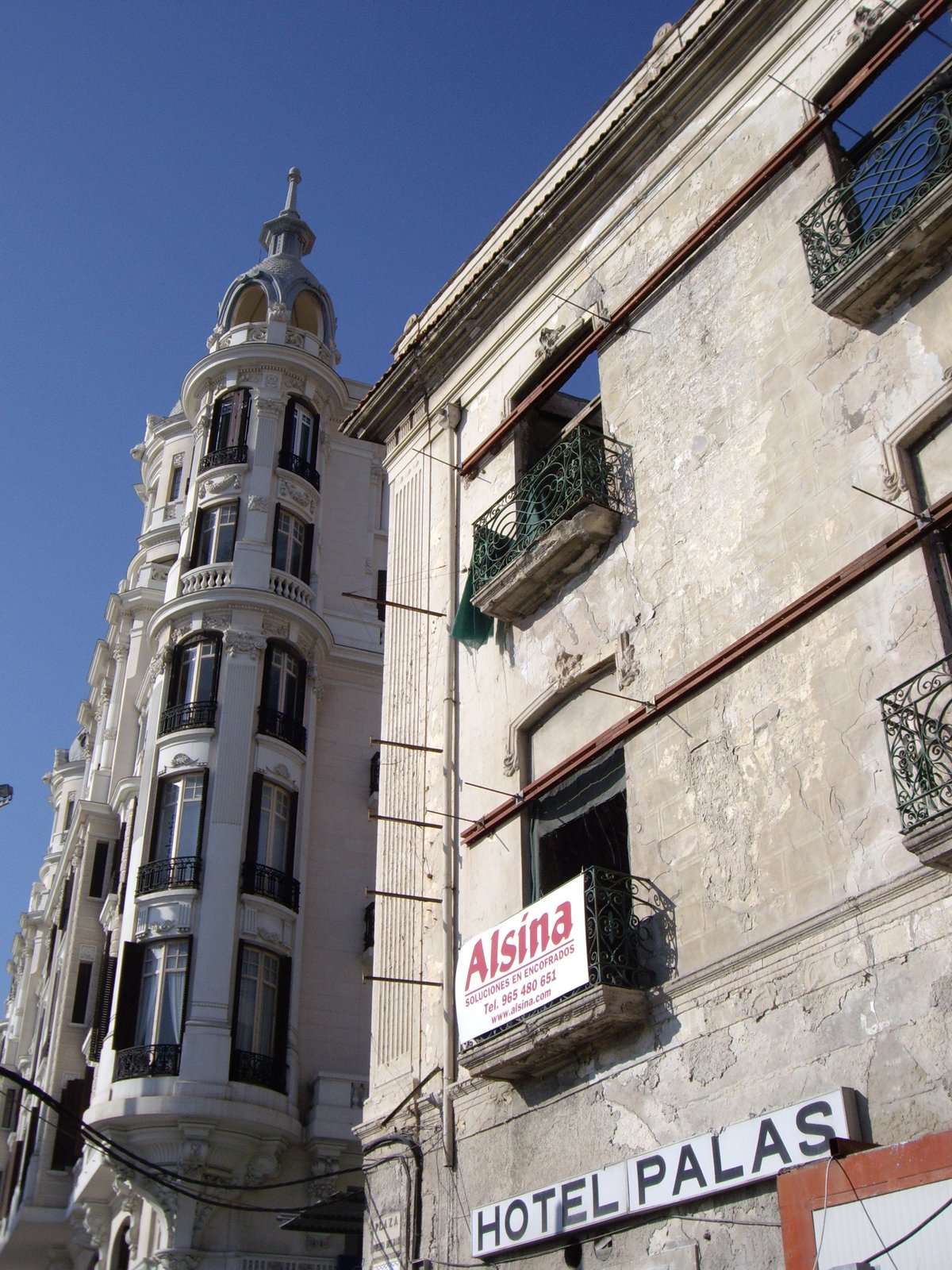
Visiting Casa Carbonell: History, Tickets, and Travel Tips
Publication Date: 16/08/2024
Introduction to Casa Carbonell
Casa Carbonell, located in the heart of Alicante, Spain, is a marvel of modernist architecture that has captivated visitors for decades. Commissioned by Enrique Carbonell, a distinguished textile entrepreneur, and designed by the acclaimed local architect Juan Vidal Ramos, the building was constructed on the site of the old market of the Port, specifically on the Puerta del Mar square (Alicante Film Office). This location underscores its historical and commercial significance, making it a cornerstone of Alicante’s urban development. Casa Carbonell epitomizes the economic and social aspirations of the early twentieth-century bourgeoisie, reflecting the affluence and architectural ambitions of the era. Its blend of modernist and classical elements, adorned with domes and French-style decorative features, contributes to its palatial appearance and recognition as one of Alicante’s most photographed landmarks. Today, Casa Carbonell stands as a cultural and tourist attraction, drawing visitors from around the world to admire its architectural grandeur and historical significance. This guide will provide a comprehensive overview of Casa Carbonell’s rich history, architectural features, and practical visitor information, ensuring a memorable experience for all who step into this architectural gem.
Contents Overview
- Origins and Construction
- Architectural Style and Features
- Significance in Early 20th Century
- Role in Alicante’s Urban Development
- Evolution Over the Decades
- Preservation and Restoration Efforts
- Cultural and Tourist Attraction
- Impact on Local Economy
- Educational Value
- Future Prospects
- Visitor Information
- Visiting Hours
- Tickets
- Accessibility
- Travel Tips
- Best Time to Visit
- Nearby Attractions
- Photography Spots
- Special Events and Guided Tours
- Frequently Asked Questions
- Stay Up to Date
Visiting Casa Carbonell: A Historical Gem in Alicante
Origins and Construction
Casa Carbonell, an iconic building in Alicante, Spain, was commissioned by Enrique Carbonell, a prominent textile entrepreneur from Alcoy. The construction of this architectural marvel was entrusted to Juan Vidal Ramos, a distinguished local architect known for his expertise in modernist design. The building was erected on the site of the old market of the Port, specifically on the Puerta del Mar square, underscoring its historical and commercial significance (Alicante Film Office).
Architectural Style and Features
The architectural style of Casa Carbonell is a blend of modernist and classical elements, reflecting the aspirations of the early twentieth-century bourgeoisie. The building’s main facade is adorned with domes and towers, which are characteristic of modernist architecture. Additionally, the French-style decorative features add a touch of elegance and sophistication to the structure. These elements collectively contribute to the building’s palatial appearance, making it one of the most photographed landmarks in Alicante (Alicante Film Office).
Significance in Early 20th Century
Casa Carbonell epitomizes the economic and social aspirations of the early twentieth-century bourgeoisie in Alicante. During this period, Alicante was undergoing significant economic growth, largely driven by the textile industry. Enrique Carbonell, as a successful textile entrepreneur, sought to manifest his wealth and status through the construction of this grand building. The choice of location, architectural style, and the scale of the project all reflect the ambitions of the era’s affluent class.
Role in Alicante’s Urban Development
The construction of Casa Carbonell played a pivotal role in the urban development of Alicante. Situated at the start of the Paseo de la Explanada, one of the city’s most famous promenades, the building contributed to the transformation of the area into a bustling urban center. The proximity of Casa Carbonell to key landmarks such as the Postiguet Beach and the Sports Marina further enhanced its significance in the city’s urban landscape (Alicante Film Office).
Evolution Over the Decades
Since its construction, Casa Carbonell has undergone several transformations, adapting to the changing needs of the city and its inhabitants. Originally built as a private residence for Enrique Carbonell, the building now houses private homes, offices, and various businesses. This evolution reflects the dynamic nature of urban spaces and the ability of historical buildings to adapt to contemporary uses while preserving their architectural heritage.
Preservation and Restoration Efforts
Over the years, efforts have been made to preserve and restore Casa Carbonell, ensuring that its architectural and historical significance is maintained for future generations. These efforts are crucial in safeguarding the building’s structural integrity and aesthetic appeal. Preservation initiatives often involve collaboration between local authorities, heritage organizations, and private stakeholders, highlighting the collective responsibility in maintaining cultural landmarks.
Cultural and Tourist Attraction
Today, Casa Carbonell stands as a cultural and tourist attraction, drawing visitors from around the world. Its historical significance, architectural beauty, and prime location make it a must-visit destination in Alicante. Tourists are often captivated by the building’s grandeur and the stories it embodies, offering a glimpse into the city’s rich history and cultural heritage.
Impact on Local Economy
The presence of Casa Carbonell has a positive impact on the local economy, particularly in the tourism and hospitality sectors. The influx of tourists to the area generates revenue for local businesses, including restaurants, cafes, and shops. Additionally, the building’s use as office space and private residences contributes to the economic vitality of the city, supporting employment and business activities.
Educational Value
Casa Carbonell also holds significant educational value, serving as a resource for students, researchers, and history enthusiasts. The building’s architectural features, historical context, and role in urban development provide valuable insights into the socio-economic and cultural dynamics of early twentieth-century Alicante. Educational tours and programs often include Casa Carbonell as a key site, enriching the learning experience for participants.
Future Prospects
Looking ahead, Casa Carbonell is poised to continue its legacy as a cherished historical landmark in Alicante. Ongoing preservation efforts, coupled with its adaptability to contemporary uses, ensure that the building remains relevant and vibrant. As Alicante continues to grow and evolve, Casa Carbonell will undoubtedly remain a symbol of the city’s rich heritage and architectural splendor.
Visitor Information
- Visiting Hours: Casa Carbonell is open to the public from 10:00 AM to 6:00 PM daily. It is advisable to check for any changes in visiting hours, especially during holidays and special events.
- Tickets: Entrance to Casa Carbonell is free, but guided tours are available for a fee. Tour prices range from €10 to €20, depending on the type and duration of the tour.
- Accessibility: The building is accessible to visitors with disabilities. Wheelchair ramps and elevators are available to ensure a comfortable visit for everyone.
Travel Tips
- Best Time to Visit: The best time to visit Casa Carbonell is during the spring and autumn months when the weather is pleasant and the tourist crowds are smaller.
- Nearby Attractions: While visiting Casa Carbonell, you can also explore nearby attractions such as the Explanada de España, Postiguet Beach, and the Santa Bárbara Castle.
- Photography Spots: The main facade of Casa Carbonell, with its domes and towers, offers excellent photo opportunities. The nearby Explanada de España promenade also provides a picturesque backdrop for your photos.
Special Events and Guided Tours
Casa Carbonell hosts various cultural events, exhibitions, and guided tours throughout the year. These events offer a deeper insight into the building’s history and significance. Check the official website or local tourist information centers for the latest event schedules.
Frequently Asked Questions (FAQ)
-
What are Casa Carbonell visiting hours?
- Casa Carbonell is open from 10:00 AM to 6:00 PM daily.
-
Are there any entrance fees or tickets required?
- Entrance is free, but guided tours are available for a fee.
-
Is Casa Carbonell accessible for visitors with disabilities?
- Yes, the building is equipped with wheelchair ramps and elevators.
-
What are some nearby attractions?
- Nearby attractions include the Explanada de España, Postiguet Beach, and Santa Bárbara Castle.
-
Are there any special events or guided tours available?
- Yes, Casa Carbonell hosts various events and guided tours throughout the year. Check the official website for details.
Stay Up to Date
For the latest updates on Casa Carbonell, including events, visiting hours, and more, follow us on social media and download our mobile app. Discover more about Alicante’s rich history by exploring our other related posts.
In summary, Casa Carbonell is not just a building; it is a testament to the historical, architectural, and cultural evolution of Alicante. Its origins, architectural style, and significance in the early twentieth century, coupled with its role in urban development and ongoing preservation efforts, make it a cornerstone of the city’s heritage. Visitors to Casa Carbonell are not only treated to a visual feast but also a journey through time, experiencing the grandeur and aspirations of a bygone era.
Summary and Final Thoughts
In conclusion, Casa Carbonell is not merely an architectural structure; it is a testament to Alicante’s rich historical, economic, and cultural evolution. From its origins as a manifestation of Enrique Carbonell’s success in the textile industry to its role in shaping the urban landscape of Alicante, the building has continually adapted to the changing needs of the city while preserving its architectural heritage (Alicante Film Office). Today, Casa Carbonell serves as a vibrant cultural and tourist attraction, offering visitors a glimpse into the grandeur and aspirations of the early twentieth-century bourgeoisie. Its significance extends beyond its architectural beauty, impacting the local economy, providing educational value, and enriching the cultural fabric of Alicante. As ongoing preservation efforts ensure its lasting legacy, Casa Carbonell will undoubtedly remain a symbol of Alicante’s architectural splendor and historical richness for future generations to admire and explore.
Sources and Further Reading
- Alicante Film Office. Casa Carbonell. Retrieved from Alicante Film Office
